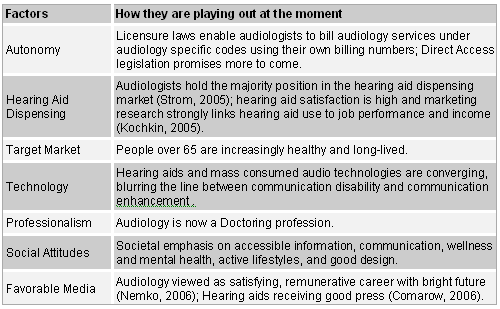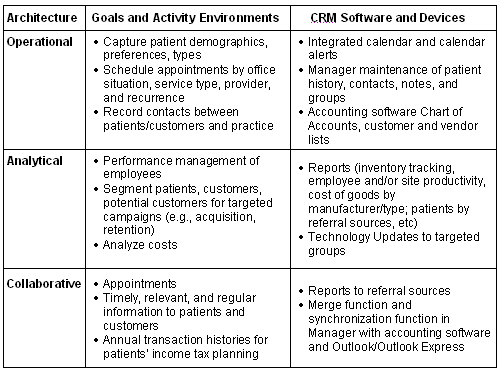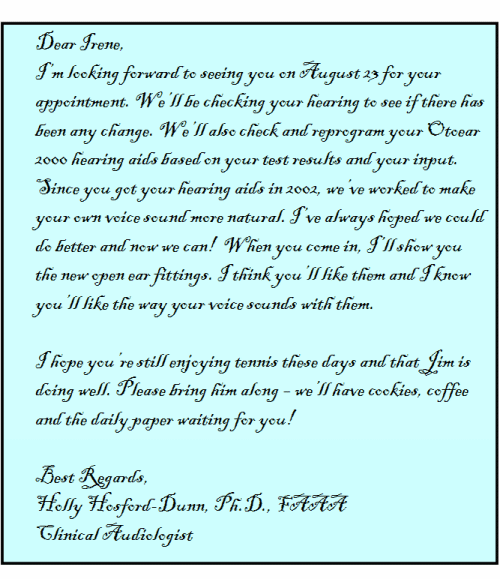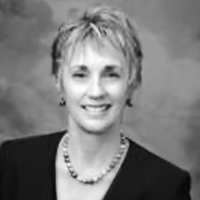After a short but eventful history, Audiology is enviably positioned in the current marketplace, thanks to a fortuitous convergence of diverse factors (Table 1). Successful positioning bears many fruits for practitioners, including increasingly profitable businesses, professional ranking among the top jobs in America (Nemko, 2006), and burgeoning target markets. In such a blissful situation, it's worth recalling a few maxims:
- Nothing is as vulnerable as entrenched success. (Ralph Nader)
- Competitors enter the marketplace as long as there is profit. (corollary to Law of Demand)

Table 1 suggests that audiologists owe their current success to several factors outside our control, a few within our control, and a good deal to being in the right place at the right time. One thing to which we do not owe our success is our business acumen. Few of us are pencil sharp at accounting or other attributes traditionally associated with successful businesses. Over 10 years after Earl Harford (1993) famously asked if our profession was going the way of hearing aid dispensers who happen to be audiologists, or as audiologists who happen to dispense hearing aids, it is clear that we are resoundingly the latter. While we have built successful audiology/dispensing practices we have not developed much in the way of business skills.
Henson, Williamson and Jacques (2006) conducted a formal study using a "knowledge gap" metric to assess audiologists' confidence in their understanding of basic business skills and the corresponding values they assigned to those business skills. The authors concluded that, "Audiologists appear to recognize very clearly that they need significant expansion of their business knowledge and skills in order to be successful, compete effectively and make sense of today's complex marketplace." (italics added, p. 54). The perceived need was greatest for Marketing which had an 87% knowledge gap.
The present article advances these premises:
- Audiologists are naturally talented marketers when it comes to setting goals, hence our success in the current marketplace.
- Untrained natural talent gets us only so far, hence our warranted fear of competitive threats in an increasingly complex and competitive marketplace and our need for business training.
- We cannot address these needs and fears until we acquire and learn how to use a strategic framework and a tool set for tactical implementation of our marketing goals.
- Office automation with the right architecture provides a strategic framework for focusing on patients, minimizing administrative costs, and maximizing long term transactions with those patients.
The present article uses the four premises above to introduce CRM and provide a framework for demonstrating CRM applications for managing dispensing audiology practices. IMC is the topic of a second article, which will be published later this year on Audiology Online in October, 2006.
Premises #1 and #2: Naturally Talented Marketers Lacking Tools and Training
The paradox of our nascent success as non-business professionals in business lies in the nature of our profession: we are service providers with a "patient first" ethical imperative. That prompts a natural "outward-inward" business orientation in which we start by considering the needs of the patient, and then parse our services and tangible products to develop a unique solution for each patient. In business parlance, we are customer-centered, which puts us squarely in the mainstream of modern thinking on Marketing (additional information on the "Stages of Marketing Evolution" is provided on page 1 of the PDF addendum to this article (Download PDF Addendum). It is worth comparing this approach to the "inward-outward" orientation of traditional businesses that we typically associate with "marketing."
Traditionally, business was product-centered, with an imperative to sell the business' product at the best price possible to as many customers as possible at the best margins. "Inward-outward" businesses concentrated inward on the products they made and then looked outward to sell. They used mass media advertising to bring their products to consumers' attention, create desire and prompt purchase. It was all about the product and the product was all about mass replication.
The emergence of service industries and the advent of internet selling have prompted an about face. Businesses are realizing that a customer centered culture is more profitable because it is less expensive to sell to existing customers than it is to constantly troll for new customers. Hence, traditional businesses are reinventing themselves as service oriented, repackaging their products and distribution channels as tailored solutions for individual customers. In short, they are emulating us, but on a large scale with better tools. Ironically, the new personal touch in business requires extensive software called Enterprise Resource Planning (ERP) which combines all areas of a business (e.g., finance, human resources, customer relations, inventory) into one integrated software program that runs off a single database so that people can share information and communicate with each other in real time (e.g., Microsoft's Dynamics software solutions www.microsoft.com/dynamics/).
Premises #3 and #4: CRM is Strategic for Marketing in Patient-Centered Practices
CRM is a component of ERP (and audiologists thought they had all the acronyms!). CRM is not just another name for customer service. A good CRM program enables a practice "...to acquire customers, service the customer, increase the value of the customer to the company, retain good customers, and determine which customers can be retained or given a higher level of service." (Wikipedia, 2006)
CRM systems were developed primarily for sales management and have been used as such for many years. More recently, these systems have been fine tuned with the advent of internet based sales and support. These environments require automated system for service and for gathering and processing personal information. Anyone who has paid a bill online, purchased from Amazon.com, or returned a Netflix product has been serviced by a CRM/ERP and is well aware of the automated processes that simultaneously service us and survey our actions! Although these activities seem a far cry from health related services, CRM applications are pervasive: at Computerworld's 4th Annual Mobile & Wireless World conference, the topic of every seventh paper was health care applications (Computerworld Inc, 2006).
In the 2nd half of 2005, Intuit and Microsoft put inexpensive mini-CRM software packages on the market that are tied to their small business accounting packages. Both are easily adaptable to dispensing audiology practices. Table 2 shows the 3-stage architecture of CRM, along with a small sample of goals and applications using this type of software. Please note that a more comprehensive listing of example goals and applications are provided on page 2 of the PDF addendum to this article (Download PDF Addendum).
Table 2. A Sample of CRM Activities and Tools in Audiology Practices

Note: Please see page 2 of the article addendum for a more comprehensive listing of goals and applications. Download PDF Addendum.
Intuit's QuickBooks Pro 2006 and Microsoft Office Small Business Accounting 2006 are small-business accounting programs featuring automatic audit trail (who did what & when), inventory management for over the counter sales and other items, payroll, merchant services for credit card transactions, customizable reports, and mail merge functions. As standalones, these programs interact with Excel, Word, and synchronize with Outlook and Outlook Express, allowing them to manage many office functions and projects.
The real potential of Intuit' s QuickBooks and Microsoft's Small Business Accounting software is realized by pairing them with their respective CRM counterparts, QuickBooks Customer Manager (quickbooks.intuit.com/) and Microsoft Business Contact Manager (www.microsoft.com/office/outlook/contactmanager/prodinfo/). Both Managers are inexpensive, extremely easy to use, and integrate all customer data in one view — including demographics, financial history, invoicing, calendar, mail merge, email, interaction history, and notes. Both Managers synchronize contacts with Outlook and Outlook Express and both allow networked PCs to synchronize Manager data. Many audiology practices probably already use QuickBooks, as Intuit has 87% market share for small businesses that use accounting software (Jones, 2006). Therefore, use of the Customer Manager might be a more immediate option for many private practices. Although the Microsoft accounting software is new and less pervasive than Quickbooks, it offers more integration. The Business Contact Manager Update comes as part of the Office Small Business Management Edition 2006, which also includes Outlook, Word, Excel, PowerPoint, Publisher and Access. Audiology practices are well positioned to benefit from current efforts by Microsoft to gain market share as it goes after most of the approximately six million small businesses in the United States that don't use specialized accounting software yet but do use Microsoft products (Bybee, 2005), as well as the 2 million new businesses starting each year (Collins, 2006). We can look forward to more and better CRM-type software solutions coming preloaded on new computers from Microsoft partners.
Documentation is Sexy ... Who Knew?
So much of what we call management consists of making it difficult for people to work.
(Riggs, 2006, quoting Drucker)
With CRM, the lowly office form and the low-paying front office have ascended to a parity level in the workplace. What used to be drudgery and constant filing is now the means enabling us to focus our energy on clinical procedures and patients to create a "customer-centered" culture while increasing productivity and profitability. Telephone message pads, sticky notes, and much-thumbed schedule books disappear, along with their clutter and confusion. The formerly loathsome and murky Chart of Accounts, freed up from the bookkeeper in back and used to full advantage, now functions invisibly behind the scenes, monitoring activities, yielding analyses of customer purchase patterns, referral patterns, employee productivity, supplier influences on cost of doing business, and inventory management.
Consider the following CRM example. Suppose you had the time to write a nice, chatty note to an individual patient about something of interest to them. It might go something like what is shown in Figure 1.

Figure 1. Example contact letter to patient.
Most patients enjoy receiving a note as shown in Figure 1, not only because it's personalized, but because it reminds them of their appointment, informs them of services to expect at the appointment, and lets them know about potential solutions to their problem(s).They develop an a priori positive attitude toward their appointment and the possibility of purchasing an open ear fitting. If they had such a letter in hand, they might change their plans about pursuing the "two for one" offer they'd just received on a bulk mail card from a chain competitor in your area.
Ninety-nine percent of us do not have time to write notes like this, even if we have all of the information about the patients in our heads or in the patients' charts, so we lose a valuable marketing tool that would give us a competitive advantage and our patients lose the opportunity to get a nice note from us. Most of us probably have some of the key information in this letter stashed in data bases. Some savvy practitioners could push a few buttons and create a target mailing list of patients with occlusion complaints who have hearing aids purchased over two years ago. It is doubtful that they can pull that list with all the personalized information needed for a marketing campaign using the sample letter (patient's preferred name, next appointment date, procedures scheduled for the appointment, year of hearing aid purchase, spouse or significant other's preferred name, favorite activity). Even if the information can be gathered, it is likely to consume a lot of time and effort to comb through different areas of storage.
Well planned implementation of CRM software using the three-stage architecture enables this level of personalization and individually tailored solution sets for customers and it does so quickly, with little or no additional time spent on data entry. Automating personalized data collection and management allows practices to produce far more efficiently and profitably while concentrating on patients rather than office drudgery. A brief example has been provided below on how the three parts of CRM work with Irene's initial contact and visit to the clinic:
- Initial Contact
Operational: Mrs. Jones calls for an initial appointment in June 2002. The receptionist uses Customer Manager to enter Mrs. Jones' demographics, chief complaints, referral source, and schedule the appointment. The Manager automatically notes the call time in Mrs. Jones contact history.
Analytical: Automatic tracking of: Referral source, primary complaints, zip code, age, insurance
Collaborative: Receptionist clicks the "New Patient Letter" template, merges it with Mrs. Jones, prints and mails an introductory letter, brochure, map, and HIPAA information to Mrs. Jones, confirming her appointment time.
- Initial Appointment
Operational: Mrs. Jones arrives for her appointment with her husband. The audiologist notes in the Customer Manager that they prefer to be addressed as Irene and Jim. The patient's history is taken as a note in Customer Manager, and tennis is noted as a favorite activity.
Analytical: Automatic updates for future tracking of: Medical/audiologic factors (e.g., middle ear surgery hx, blood thinners, diabetes, H&N cancer, progressive hearing loss), cerumen mgmt history, hearing aid use (e.g., new user, experienced user), patient activities, patient limitations.
Collaborative: Patient is greeted by name and referral source acknowledged.
If the reader would like to see an expanded example, please see page 3 of the article addendum. It shows a more comprehensive ten-step example from Irene's initial contact to how the process would eventually produce the illustrative letter above in Figure 1 (Download PDF Addendum).
The only thing that differs in the examples above from activities in many routine practices is that all activities come and go through a CRM Manager. Little or nothing new is added to the knowledge base but there is no duplication of effort and all knowledge resides in the computer rather than in various people's memories or various sticky notes! The knowledge is frequently updated by different staff at different times at different computers according to the nature of the encounter. At all times, the information is instantly and completely accessible to anyone in the office who has proper authority to enter the Manager from any computer.
"But Wait, There's More!!!" - Wireless Flexibility
The goal of managing customer relations is not new, but the holistic approach of CRM means eliminating isolated problems and isolated solutions. A parallel process is emerging with the unification of business software and hardware and devices, most evident in the convergence of technology into smart phones. This convergence has the potential to bring the mobile audiology office into its full potential.
Phones are familiar interfaces that are becoming data devices which hold interactive calendars, alerts, contact lists, notes, and to do lists that automatically synchronize wirelessly with Microsoft Outlook and Outlooks Express every few minutes. Microsoft is using the familiar interface to develop an Ultra-Mobile PC (www.microsoft.com/windowsxp/umpc/) so that there is an unbroken continuum between high-end phones and low-end PCs. Coupling this wireless technology to CRM in the office means that we can manage our offices and patients efficiently and stay customer-focused wherever we are and whatever we are doing. Add Bluetooth technology and voice recognition software into the mix and there is no end in sight to the degree to which we can interact personally with our patients, employees and customers. Quoting a recent Bill Gates (2006) presentation, "... it can mean a doctor wandering around a hospital; quite amazing how when you unleash people who have to move around as part of doing their job, and yet give them that data empowerment to see and to input, that that can make a very big difference."
I doubt there is any audiologist reading this that doesn't react negatively to the idea of being tied to a practice 24/7. Likewise, HIPAA experts and many patients undoubtedly have important questions about privacy and portability in this new world. When, indeed, does our natural marketing inclination to work closely with patients become a liability? How far will professionals and others go in a competitive market to get close and personal with customers, especially as amplification converges with popular electronics? How close do customers want us to come? This new world of service and product delivery is coming very fast and boundaries are being rethought and redrawn and then redrawn again (witness the "Do Not Call" registry at www.donotcall.gov for land lines, which is now extended to cell phones). Business etiquette and personal etiquette are being reshaped by ear level devices, personal workstations we take into Starbucks, and databases compiled by our online activities, to name a few. Sharing a CRM database in wireless environments invites scrutiny of the measures to which we protect patient privacy.
Fortunately, we once again are well positioned to benefit from larger parties who have the same concerns. Protection of privacy comes in a variety of manners: 1) screening employees and providing them with secure authorization access to the database, 2) automated off-site backup to a secure, encrypted server via an online backup company, 3) using special locks and passwords on phones and portable PCs, 4) keeping up with technology and technology debates by reading discussions such as those found in the White Papers on Silicon.com (2006).
Conclusion and Next Steps
CRM software enables the practitioner to take advantage of the "patient first" or "outward-inward" orientation that is the nature of healthcare related businesses. The availability of reasonably priced and easily integrated CRM software makes it relatively easy to implement this powerful tool within your office. As these systems are integrated via multiple software and hardware interfaces, this empowers everyone in your practice to provide an even higher level of service to patients. Once this highly personalized level of interaction is realized, one might ask, "What's the next step?" The next step in this process is developing methods for disseminating the practice's brand and message through all available channels linking the practice to its markets. This is done by understanding and implementing Integrated Marketing Communications (IMC) methodologies. This will be the focus of the second article in this series to be published in December of 2006 on Audiology Online. So stay tuned, and be ready to take your practice marketing to the next level.
References
Bybee, D.B. (2005, July). Microsoft Office Small Business Accounting 2006. Bybee Consulting LLC Newsletter. Retrieved June 6, 2006, from www.bybeeconsulting.com/newsletter/issues/july2005a.htm
Collins, J.C. (2006) Small business software grows up. Journal of Accountancy, 201(3), 50-60. Retrieved June 6, 2006, from www.aicpa.org/pubs/jofa/mar2006/collins.htm
Computerworld Inc., (2006). Agenda for 4th Annual Mobile & Wireless World. Retrieved June 6, 2006 from www.mwwusa.com/agenda.html
Comarow, A. (2006, May 22). Good Vibrations - They're still hearing aids. But they're better--and smaller. U.S. News & World Report. pp. 53-56. Retrieved June 6, 2006, from www.usnews.com/usnews/health/articles/060522/22hearing.htm
Gates, B. (2006, March 27). Keynote Address presented at the Convergence 2006 conference. Retrieved June 6, 2006, from www.microsoft.com/events/executives/billgates.mspx
Kochkin, S. (2005). HR Interviews...Sergei Kochkin, Ph.D. The Hearing Review, (12)3, 24-32, 82.
Etzel, Stanton & Walker (2004). The Nature and Scope of Marketing (13th ed.). New York: McGraw-Hill.
Duncan, T. (2002). IMC: Using advertising and promotion to build brands. New York: McGraw-Hill Irwin.
Jones, D. (2006, January 16). Best job for customers wins, Intuit CEO says, Don't be a good loser; be a good learner. USA Today. pp. 4B. Retrieved June 6, 2006, from www.usatoday.com/educate/college/careers/Advice/1-16-06.htm
Nemko, M. (2006, January 5). Money: Excellent careers for 2006. US News and World Report. Retrieved June 6, 2006, from www.usnews.com/usnews/biztech/articles/060105/5careers_excellent.htm
Harford, E. (1993). The impact of the hearing aid on the evolution of audiology. 1993 Carhart Memorial Lecture to the Annual Meeting of the American Auditory Society, Phoenix, AZ, April 15, 1993.
Henson, S., Williamson, S., & Jacques, P. (2006). Business training and education needs of audiology managers. Audiology Today, 18(2), 49-54.
Riggs, K. (2006). Effective employee supervision. Hearing Review, April 2006, 24-28.
Silicon.com (2006). VoIP - IP Telephony White Papers. Retrieved June 6, 2006, from newsletters.silicon.cneteu.net/t/119813/2025043/189452/0/
Strom, K.E. (2005). The Hearing Review 2005 dispenser survey. Hearing Review, 12(6), 18-25.
Wikipedia (2006, June 6). Customer relationship Management. Retrieved June 6, 2006, from en.wikipedia.org/wiki/Customer_Relationship_Management


